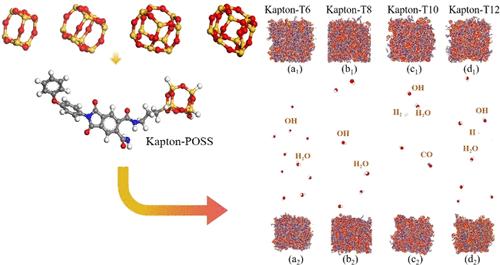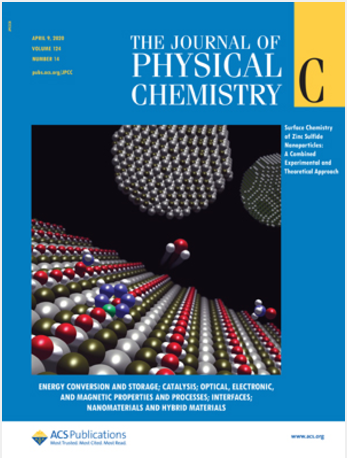Reactive Molecular Dynamics Simulation on the Disintegration of Kapton-POSS Composites during Atomic Oxygen Impact
IF 3.3
3区 化学
Q2 CHEMISTRY, PHYSICAL
引用次数: 0
Abstract
In low Earth orbit (LEO), atomic oxygen (AO) is one of the most prevalent reactive species that affects polymers on spacecraft’s surface, such as Kapton, leading to significant degradation. To enhance the resistance of Kapton against AO-induced degradation, polyhedral oligomeric silsesquioxane (POSS: (SiO1.5)n) modification has emerged as a promising strategy. However, the underlying mechanisms of this enhancement remain to be elucidated, which is the objective of present study. In this work, we investigate the surface chemistry of various Kapton-POSS composites exposed to AO environments, where n equals 6, 8, 10, and 12, respectively. For simplicity, these POSS structures are referred to as T6, T8, T10, and T12 throughout the text. We employed computational chemical evaluations of both Kapton and Kapton-POSS composites under identical conditions, using the reactive force field (ReaxFF) approach. This method facilitates molecular dynamics (MD) simulations on large-scale systems while allowing for dynamic modeling of chemical reaction processes. Our findings indicate that the resistance of pure Kapton to AO is inferior to that of Kapton-POSS composites, with results corroborating experimental observations. Analysis of mass loss and exfoliation rates among the four composites demonstrates that Kapton-T6 exhibits diminished stability. Moreover, assessments of the spatial distribution and concentration of AO within the material postirradiation reveal that Kapton-T10 is more effective at absorbing the kinetic energy from AO impact. Mechanistic analysis of small molecule product formation revealed the innovative discovery that the POSS structure attracts atomic oxygen (AO) and alters their trajectories, thereby enhancing the anti-AO capability of Kapton. Notably, T6 and T12 demonstrated superior protective performance for Kapton compared to T8 and T10.

求助全文
约1分钟内获得全文
求助全文
来源期刊

The Journal of Physical Chemistry C
化学-材料科学:综合
CiteScore
6.50
自引率
8.10%
发文量
2047
审稿时长
1.8 months
期刊介绍:
The Journal of Physical Chemistry A/B/C is devoted to reporting new and original experimental and theoretical basic research of interest to physical chemists, biophysical chemists, and chemical physicists.
 求助内容:
求助内容: 应助结果提醒方式:
应助结果提醒方式:


